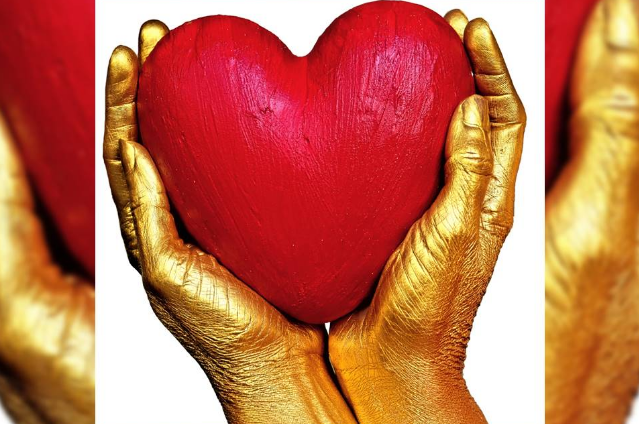
Photo by Marek Studzinski on Unsplash
To embark on this journey of contemplation, we begin with a poignant query: What, dear reader, are the boundaries of compassion? In the hallowed halls of medicine, where the oath to "not harm" echoes resolutely, we are compelled to confront the enigmatic interplay between life, death, and the pursuit of alleviating human suffering.
Consider this startling statistic: In the United States alone, it is estimated that approximately 10,000 individuals per year may opt for medical assistance to terminate their own lives, reflecting the gravity of this issue in contemporary society. Such a numerical revelation unfurls a tapestry of questions and considerations. Is this an expression of autonomy, the ultimate testament to one's sovereignty over their own fate? Or does it represent an ethical precipice, where the medical profession treads perilously close to the slippery slope of euthanasia?
Allow me to invoke the wisdom of Socrates, the ancient philosopher, who declared,
"An unexamined life is not worth living."
In the context of euthanasia and assisted suicide, the profound impact of this statement reverberates through the corridors of hospitals and courtrooms alike. As we delve deeper into this intricate discourse, we shall explore the complexities, the moral intricacies, and the undeniable humanity embedded within this contentious topic.
EUTHANASIA VS. ASSISTED SUICIDE:
-A PRECISE EXAMINATION OF DEFINITIONS AND DISTINCTIONS
Euthanasia, in its broadest sense, refers to the intentional act of ending another individual's life to alleviate their suffering, typically driven by medical considerations. Contrarily, assisted suicide delineates a scenario in which an individual, possessing the capacity to make a rational and autonomous decision, seeks assistance from another party to facilitate their own death, primarily for the relief of intractable suffering.
To elaborate, euthanasia involves a third party, such as a physician, actively taking measures to terminate a patient's life, with or without explicit consent, depending on the circumstance. Assisted suicide, on the other hand, entails a self-directed termination process, wherein the individual, often aided by a medical professional, administers the lethal substance themselves, thereby retaining agency over the act.
Forms of Euthanasia: A Nuanced Spectrum
Euthanasia, as a multifaceted concept, manifests in several forms, each bearing distinct ethical implications:
- Voluntary Euthanasia: In this form, the patient, who is suffering from a terminal illness or intolerable pain, consents explicitly and unequivocally to their own death. The act is typically carried out by a medical practitioner, often involving the administration of a lethal dose of medication.
- Non-Voluntary Euthanasia: A morally intricate facet of euthanasia arises when the patient's capacity to provide informed consent is compromised, such as in cases of advanced dementia or unconsciousness. In these scenarios, decisions regarding the termination of life are made by a surrogate or healthcare professional, guided by the patient's previously expressed wishes or best interests.
- Involuntary Euthanasia: The most ethically fraught manifestation of euthanasia occurs when a patient's life is terminated against their will, often stemming from external judgments, typically made by healthcare professionals or relatives. This form is heavily criticized and generally prohibited by law.
Methods of Assisted Suicide: Empowering Autonomy
Assisted suicide unfolds in several modalities, all predicated on enabling individuals to exercise their autonomy over the termination of their lives:
- Self-Administration of Lethal Medication: A prevalent method involves the individual ingesting a prescribed, lethal medication voluntarily. Physicians may prescribe such medications in jurisdictions where assisted suicide is legally permissible, affording patients a degree of control over the timing and manner of their passing.
- Inhalation of Lethal Gases: Some jurisdictions permit the use of inert gases like helium, which, when inhaled, induce unconsciousness and eventual death. This method, characterized by its peaceful nature, is favored by those who seek to minimize suffering.
- Intravenous Administration: In certain cases, individuals may opt for intravenous administration of a lethal substance, typically under the guidance of a medical professional. This method ensures precision and efficacy.
In conclusion, while euthanasia and assisted suicide share common themes of alleviating suffering through the intentional cessation of life, their subtle distinctions carry profound ethical, legal, and medical implications. Understanding these nuanced differentiations is pivotal in fostering informed discourse and policymaking surrounding these complex and contentious issues.
THE ETHICAL AND MORAL LABYRINTH
-OF EUTHANASIA AND ASSISTED SUICIDE

In the hallowed halls of ethical deliberation and moral reflection, the contentious issue of euthanasia and assisted suicide stands as a formidable sentinel. In this article, we embark on a journey through the intricate web of ethical and moral perspectives that have entangled this topic for years. We shall navigate the churning waters, mindful of the fierce currents that both support and oppose these practices.
The Argument for Euthanasia and Assisted Suicide:
Proponents of euthanasia and assisted suicide champion a philosophical platform rooted in the bedrock of individual autonomy. They contend that every individual possesses an inherent right to self-determination, extending even to the end of life. The right to choose, they argue, should encompass the right to choose when and how one's life concludes. This perspective places a paramount emphasis on personal agency.
The discourse further unfurls as we confront the unassailable specter of suffering. Proponents advocate that alleviating irremediable suffering, particularly in cases of terminal illness, is an act of profound compassion. By offering a humane and dignified exit from the throes of agony, they assert that euthanasia and assisted suicide can serve as an act of mercy.
Dignity, the golden fleece of this debate, shines resplendently. Advocates posit that the right to die with dignity is as sacrosanct as the right to live with it. To them, a life marked by unremitting pain or incapacitation detracts from the inherent dignity of the human condition, and in such circumstances, the choice of a graceful departure is a testament to the enduring value of human autonomy.
The Argument Against Euthanasia and Assisted Suicide:
In the opposing citadel, the guardians of life's sanctity raise their standards high. They argue that life is an intrinsic gift, inviolable and beyond human manipulation. To them, euthanasia and assisted suicide tread perilously close to the precipice of undermining the very essence of life's sanctity.
Moral trepidation echoes through the chambers of this discourse, for there exists the ever-present specter of potential abuse. Skeptics caution that legalized euthanasia and assisted suicide could be wielded as instruments of coercion, potentially endangering vulnerable individuals who might be pressured into choosing death over life. The ethical conundrum of safeguarding against such abuse while respecting individual autonomy remains a formidable challenge.
The moral fabric of society itself finds itself woven into this intricate tapestry. Those who decry euthanasia and assisted suicide as morally abhorrent contend that the normalization of these practices erodes the societal reverence for the sanctity of life, potentially paving the way for a culture that devalues human existence.
In conclusion, the debate surrounding euthanasia and assisted suicide is an ethereal battleground where principles of autonomy, compassion, sanctity, and moral responsibility converge. It is a testament to the richness and complexity of the human experience, where deeply held convictions clash, and the ultimate moral compass is a question that transcends easy answers.
NAVIGATING THE MORAL NEXUS:
-MEDICAL PROFESSIONALS IN THE REALM OF EUTHANASIA AND ASSISTED SUICIDE

In the hallowed corridors of healthcare institutions, where the tenets of compassion and preservation of life are held sacred, a profound ethical dilemma unfurls its complex tendrils. The subject at hand is the role of medical professionals in the contentious domains of euthanasia and assisted suicide.
As the ethical custodians of human well-being, physicians and nurses wield the power to mend the afflicted and mitigate pain. Yet, the emergence of euthanasia and assisted suicide as contentious legal and moral quandaries has cast an intricate shadow over their sacred oath to "not harm."
Medical professionals who find themselves at this crossroads grapple with a profound paradox: How does one reconcile the impulse to heal with the ethical obligation to respect the autonomy of patients who wish to terminate their own suffering? The tug-of-war between alleviating pain and preserving life is a deeply philosophical and moral conundrum that has no easy resolution.
When a patient, tormented by the relentless agony of a terminal illness, seeks the sanctuary of euthanasia or assisted suicide, healthcare providers are thrust into an unenviable role. On one hand, they confront the principle of beneficence, which compels them to relieve suffering; on the other, the principle of non-maleficence, demands they do no harm. This ethical tightrope walk, a precarious journey through an ethical labyrinth, often tests the very core of their professional identity.
Within the realm of medical ethics, the perspectives of healthcare providers are as diverse as they are poignant. Some view these life-ending interventions as a manifestation of the ultimate empathy—a final act of compassion in the face of relentless suffering. For them, participating in euthanasia or assisted suicide is an affirmation of their commitment to patient-centered care, acknowledging that the sacredness of life encompasses the right to a dignified death.
Conversely, others vehemently contend that such interventions transgress the immutable boundaries of their profession. For these conscientious objectors, participating in euthanasia or assisted suicide represents a profound moral and ethical breach—a renunciation of their oath to protect and preserve life at all costs.
In the labyrinthine world of medical ethics, physicians and nurses are challenged to decipher the intricacies of individual autonomy, the sanctity of life, and the pursuit of human dignity. The ethical quandaries they face when patients request euthanasia or assisted suicide are a testament to the profound complexity of healthcare in a world where pain and suffering often defy easy solutions.
EUTHANASIA AND ASSISTED SUICIDE:
-INSIGHTS FROM PUBLIC OPINION AND CULTURAL DYNAMICS
the realm of ethical dilemmas and medical controversies, the subject of euthanasia and assisted suicide stands as a beacon of contention. This article delves into the intriguing realm of public opinion on these matters, unveiling the intricate interplay of cultural, religious, and societal factors that shape people's perspectives.
The Pulse of Public Opinion
A litmus test of any contentious issue invariably lies in public opinion. To gauge the prevailing sentiment, surveys and studies have been indispensable tools. Recent data reveals a striking diversity of viewpoints on euthanasia and assisted suicide.
A comprehensive survey conducted by BMJ illuminates this intricate tapestry of beliefs. The results were illuminating, indicating that 43% of respondents expressed support for the legalization of euthanasia and assisted suicide under specific circumstances, while 14% remained resolute in their opposition.
Cultural Context Matters
The fabric of public opinion on euthanasia and assisted suicide is intricately woven with the threads of culture. Cultural backgrounds significantly influence individuals' attitudes and beliefs in this contentious arena.
In more secular societies, where personal autonomy is held in high regard, support for euthanasia and assisted suicide tends to be more pronounced. Countries like the Netherlands and Belgium, for instance, have implemented legal frameworks that reflect a prevailing acceptance of these practices.
On the flip side, nations where religious conservatism exerts a considerable influence often exhibit a more resistant stance. Cultural norms rooted in religious values, such as the sanctity of life, frequently lead to opposition to euthanasia and assisted suicide.
The Role of Religion and Faith
Religion, a cornerstone of many people's lives, plays a pivotal role in shaping their views on the sanctity of life and the moral implications of euthanasia and assisted suicide.
In predominantly Christian societies, divergent interpretations of religious texts have led to a spectrum of perspectives. While some Christian denominations oppose these practices vehemently, others, influenced by compassion and a belief in alleviating suffering, are more open to certain forms of euthanasia and assisted suicide.
In contrast, cultures with a strong Buddhist influence often emphasize the concept of suffering and the importance of a peaceful death. This can lead to more nuanced views on euthanasia, with considerations of compassion and the reduction of pain.
Societal Forces at Play
Beyond culture and religion, societal factors exert a considerable sway over public opinion. These factors encompass not only legal frameworks but also broader social discussions, healthcare systems, and media portrayal.
Countries with established frameworks for euthanasia and assisted suicide often have more open discussions surrounding these practices. This transparency can lead to a higher level of public acceptance, as individuals become more informed about the safeguards in place to prevent abuse.
The portrayal of euthanasia and assisted suicide in the media also plays a pivotal role. High-profile cases and documentaries can sway public sentiment by exposing individuals to real-life narratives that challenge or support existing beliefs.
THE SILENT BATTLE WITHIN:
-EXPLORING THE EMOTIONAL AND PSYCHOLOGICAL COMPLEXITIES OF EUTHANASIA AND ASSISTED SUICIDE

Photo by Nik Shuliahin 💛💙 on Unsplash
In the section on life-and-death decisions, the contentious topics of euthanasia and assisted suicide evoke an array of emotional and psychological complexities that extend beyond the legal framework. This exploration delves into the profound impact on patients, families, and healthcare providers enmeshed in the intricate tapestry of these procedures, and dissects the ethical conundrum known as the "double effect."
Emotional and Psychological Impact: A Profound Odyssey
Behind the veil of these divisive terminologies lies a visceral human experience. For patients facing the decision to end their own lives, the emotional toll is an intricate mosaic of anguish, fear, and relief. The prospect of exercising autonomy over their own destiny is juxtaposed with the inherent fear of the unknown.
The families of such individuals bear witness to a unique brand of anguish, grappling with a profound sense of loss even before their loved ones depart. The emotional journey is an intricate dance, marked by love, empathy, and the painful acceptance of their relative's decision.
Within the healthcare realm, providers walk a fragile tightrope between compassion and ethical dilemmas. The act of facilitating an individual's choice to end their suffering takes an incalculable toll on the psychological well-being of these professionals. It is a weighty responsibility that demands introspection, often leaving scars that transcend the physical realm.
The "Double Effect" Ethical Tightrope
In the ever-evolving discourse on euthanasia and assisted suicide, the concept of the "double effect" emerges as a linchpin. This ethical quandary scrutinizes the intentions of medical practitioners when administering treatments that may hasten death, while primarily aiming to alleviate suffering.
The "double effect" posits that the moral assessment of such actions hinges on whether death is intended or merely foreseen as a potential consequence. The ethically fraught terrain is navigated by a plethora of medical professionals who must, at times, wrestle with their convictions in the face of patient autonomy.
As the pendulum of public opinion continues to sway, these emotional and psychological aspects remain ever-present. The debate endures, beckoning society to confront the profound human experience entangled within the intricacies of euthanasia and assisted suicide. Amidst the legal and ethical debates, it is the resounding echo of these emotional and psychological impacts that serves as a somber reminder of the gravity of these life-altering decisions.

"Euthanasia is not about the right to die. It's about the right to die with dignity." - Derek Humphry
